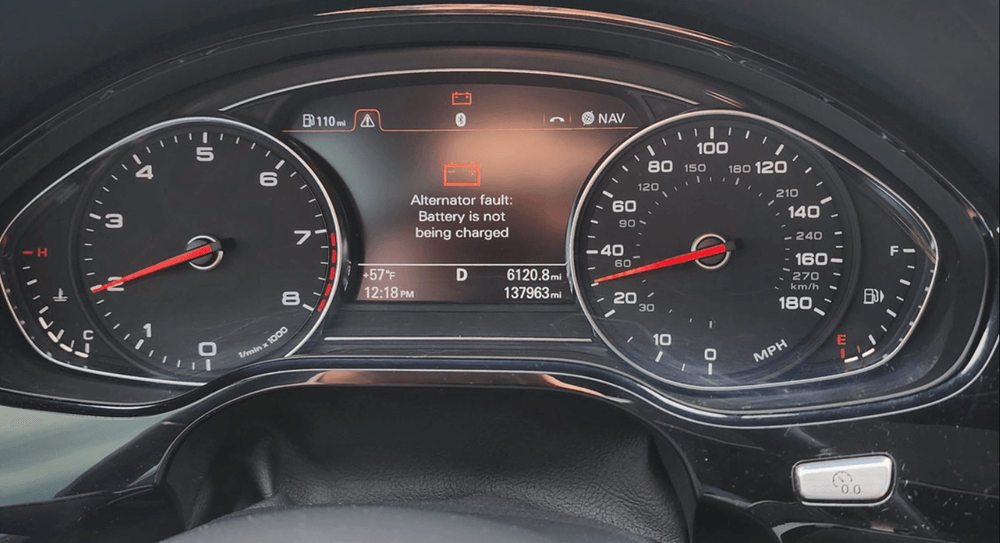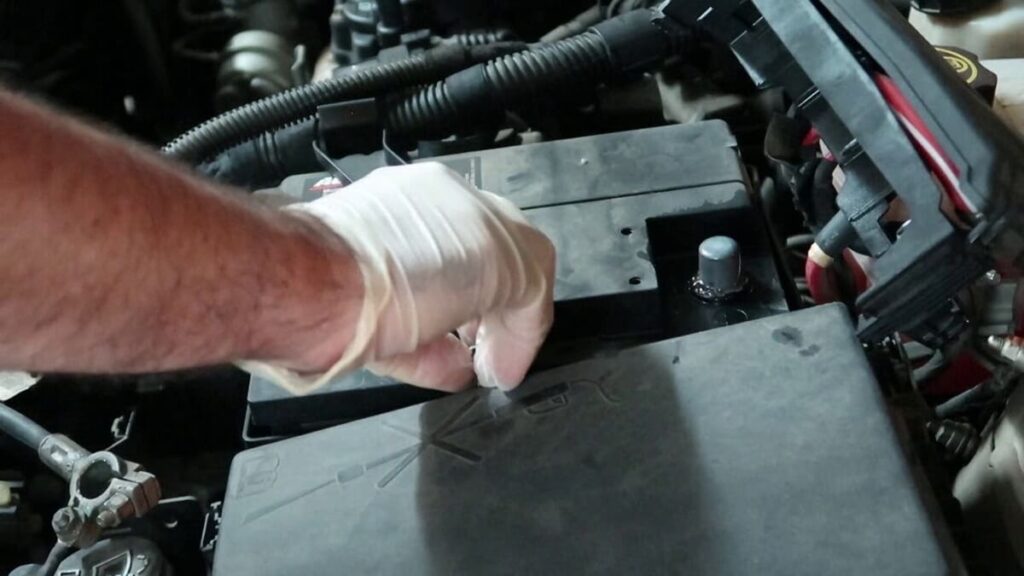One of the most frequent error messages for Audi owners is “Audi alternator fault: Battery not being charged.” This alert usually comes off when the alternator malfunctions or stops working due to electrical problems or any of the other possible reasons I’ll describe below.
This is one of the common issues with Audis. But don’t worry if you own an Audi and this notice has suddenly appeared on your dashboard; we’ll take care of it together. In this article, we will tell you about the common causes and some fixes to solve this issue.
What does “Alternator Fault Battery Is Not Being Charged” Mean?
This alert typically indicates that the alternator is not properly charging the battery when it appears on the vehicle. This message will appear on your dashboard if the alternator is unable to maintain the battery’s charge. A serpentine belt attached to the engine must rotate the pulley for an alternator to operate correctly. Your automobile won’t be able to power the alternator, which won’t be able to charge the battery if this belt breaks.

Audi “Alternator Fault Battery Not Charging” Causes:
Here are some of the causes that are the main reason for this issue:
1. Damaged Serpentine belt
Your serpentine belt cannot turn the pulley of the alternator if it is damaged. This may occur if the belt breaks or loosens up enough to begin slipping on its pulley. The devices in your car won’t function properly if the belt isn’t in good condition. You might also hear some whining or rattling sounds. These noises are caused by a poorly performing belt bearing.
2. The Battery Terminals’ Corrosion
Corrosion prevents your alternator from charging the battery. It’s among the main causes of your alternator not charging your battery. The terminals are corroded by the chemical or foam, which prevents them from conducting electricity. The elements are either yellowish, bluish, or greenish. An old battery may experience this kind of situation if it is overcharged or if there are leaks of acid or gas.
3. Alternator Voltage Regulator Issue
An issue with your voltage regulator could prevent your battery from charging fully. The alternator is in charge of converting engine energy into electrical power, which is then stored in your Audi battery.
Your battery is thus unable to obtain power after it fails. It can sometimes even blow the car’s cables and accessories. The lights on your car will continually get too bright or dull. It’s easier to notice this when you release the pedal. This happens because of the regulator’s poor performance.
4. Bad Battery
It is important to keep this cause in mind first, especially while you are starting the car. Your car’s lights are powered by the alternator and battery working together. It’s possible that your battery is outdated or has problems. Thus, it won’t use the alternator to generate power.
In addition, if the alternator fails, your battery will use up energy more quickly. When you start the car, this symbol will be visible. The engine will start, but it will shut off after a few minutes or seconds. You might sometimes be unable to start the vehicle.
5. Bad Alternator
There is a question in everyone’s mind “Does the alternator affect the battery”? If the alternator isn’t working properly, it won’t be able to charge the battery. This means that your vehicle won’t start, and as these alternators do wear out over time due to wear and tear, this is one of the most frequent causes on Audi vehicles especially in Audi A1, A6, A4, A3, A5, A7 and Q7.
Similar Posts:
- Audi Stabilization Control Fault
- Audi Parking Brake Malfunction
- Service Driver Assist System
- Clunking Noise When Driving Slow
5 Ways To Fix Audi Alternator Fault Battery Not Charging:
The following are the best solutions for alternator problems that aren’t charging. Even if the alternator and battery test well but aren’t charging, these methods will save your Audi:
1. Change the Alternator
If you possess the necessary abilities, make sure you replace the item. If not, let your mechanic get the right alternator for your car and handle the hassle for you. The type of alternator you need depends on your car. If you choose the incorrect one, the battery in your car won’t charge. To find the correct part number, use your old alternator.
2. Purchase a New Battery
Use a multimeter to measure the battery’s voltage and current before buying a new one. The old battery may not last for a long time. Choose a battery that can meet the demands of your car as well. It stops problems with frequent battery draining. This way, you won’t have to worry as much about the battery running out while you’re on the road.

3. Replace the Serpentine Belt
If the vehicle has a manual tensioner, please use caution when installing a new alternator belt. After they’ve been tightened, check them again. If the issues are with the pulley and belt, you shouldn’t be as concerned. Replacing an alternator can be done easily and affordable. Make sure the one you get is the right fit with your car and is authentic.
4. Regulator Voltage Adjustment
The problem can be fixed by adjusting the regulator’s output. Every class uniquely modifies the stages. However, replace the regulator if it’s dead. Let your mechanic take care of things. It might be necessary to replace the alternator completely in some vehicles. Make sure you purchase the best voltage regulator for your vehicle before proceeding.
5. Clean the Regulator and Battery Terminals
It is essential to remove spills and dust from the regulator and terminals. There will be a constant power flow if you do it correctly.

The method is inexpensive and simple. Hire a professional to thoroughly clean and open the alternator. To properly clean oil spills, you must separate the sections. You’ll need to replace it if the oil spill is excessive.
Conclusion
Batteries and alternators work together to keep your Audi car running smoothly. Your car’s battery will not work if the alternator fails. There are several indicators that your car’s alternator is near or dead. Rattling sounds will be the most frequent ones to hear. These noises reveal a lot about the condition of the belt and internal components of the alternator.


![[FIXED] Audi Alternator Fault Battery Not Charging Audi Alternator Fault Battery Not Charging](https://carstale.com/wp-content/uploads/alternator-fault-battery-not-charging-audi-1024x470.jpg)